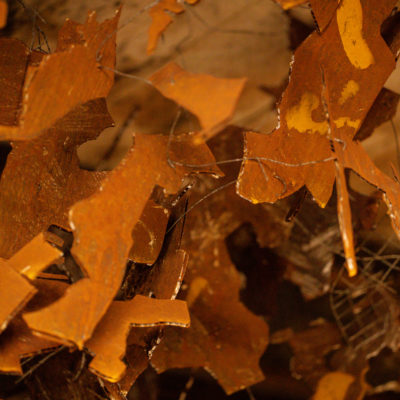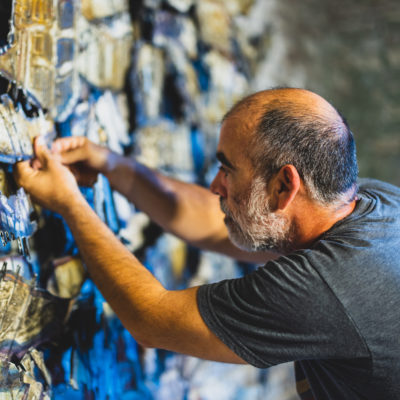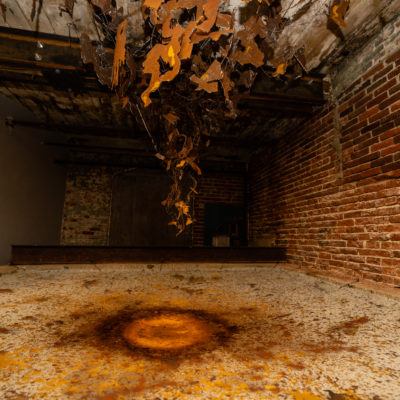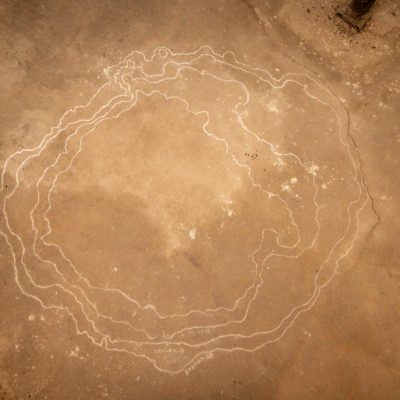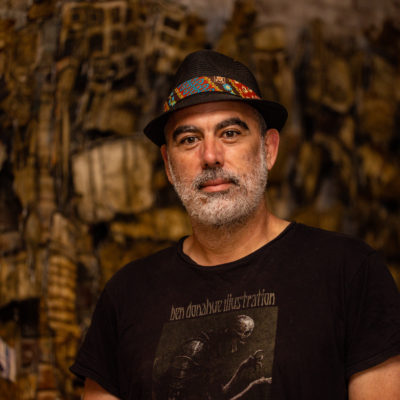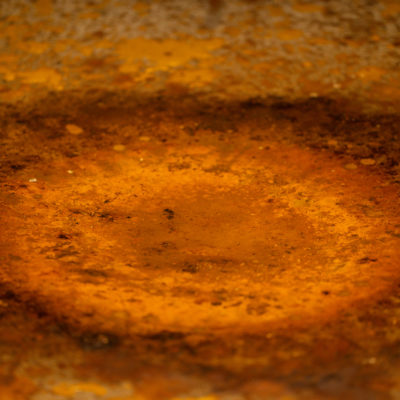Erosive Tension: Western Avenue | Room 140
A Dialogue with Decay
Artist Roneld Lores creates where things fall apart. Western Avenue is a textile mill complex that has been almost fully renovated into hundreds of art studios and lofts. Deep in a back corner of one of the mills is an unrenovated room too odd to use. A hundred years ago the massive cistern dominating the room was used to dump dye, and the structure still keeps the space from being useful as a studio. The room’s untouched aging interested Lores, a sculptor and painter living and working at Western Avenue, and he spent two years creating work in and with the space. The resulting installation Erosive Tension is an immersive work that explores the dissonance between how human and natural factors transform environment. Roneld was kind enough to answer some questions for us about how the site and the context of the project influenced the final work.
The goal of Western Avenue is to be a safe and affordable home for artists on a generational scale, beyond single lifetimes. Erosive Tension uses the passage of time as a significant element, both in the physical processes that are set in motion and in the context of the frame of human history. These particular industrial buildings carry the weight of the American Industrial Revolution and all of its intersections. How did examining that history evolve for you during the course of creating the work?
Lores: Erosive Tension is an art installation that explores the dissonance between how human and natural factors transform environment. Erosion stems from the Latin, “erodere”—to wear away and consume. Natural erosion is the process of wearing away and recycling materials into new possibilities, and human erosion is the process of consuming resources to construct and preserve our habitats.
In many ways, the Industrial Revolution was an inflexion point that led to an acceleration of unsustainable global practices that are in direct conflict with natural systems of balance and we are now beginning to experience the consequences of these excesses of industry and consumerism. On the other hand the revitalization of Western Avenue from a decaying industrial building to a thriving artist community is a testament to creativity, community, and generational sustainability—Western Avenue is an inspirational example of people working together to create a better future for themselves and for the generations to come.
The installation, benefits from this entire historical arc. It is critical of the ways in which we fail to coexist with natural processes but it also offers hope for a more balanced and responsible way forward.
The installation occupies one of the last unrestored rooms in the Western Avenue complex, a complex that includes the live/work lofts that you inhabit. How did you find that living in the same industrial space that holds the installation room affected the work?
Lores: The greatest benefit of living and working so close to this installation space was the ability to spend so much time in the room. From its inception, the idea behind the project was to find one of the last remaining unrestored spaces in a mill building, dating back to the Industrial Revolution, and to become an active collaborator with the space itself. The installation is a personal immersion and meditation into impermanence and the erosive processes taking place in the room which I have tried to expose for the visiting audience. Most of what I was after, happens at different time scales from our attention span or even life-span, so my initial strategy was to simply spend time in the room. To allow the space to slowly reveal it’s nuances and secrets, I needed to be present, so I found myself doing other tasks in the space, such as reading, listening to music, and meditating, in addition to working on the artistic interventions. In the two years that I worked in the space, there was a stillness of the things that appeared frozen in time, contrasted by brief moments of change, like the play of light on a corner, or the puddles of water after a rain storm. To witness and document the events that influenced the work, would not have been possible without the proximity of this space to the rest of my day-to-day life.
“Our diverse community of artists is our biggest asset.”
Western Avenue itself has at least two elements, the physical reality and renovation of the buildings into artist spaces and the human creative community that inhabits and creates in those spaces. What ways did the intangible connections in the community affect the work surrounding Erosive Tension?
Lores: I have been part of the Western Avenue artist community for the past 8 years. As an interdisciplinary artist, always looking to expand my range of techniques and media, our diverse community of artists is our biggest asset— responsible for nurturing and accelerating our collective and personal growth. Throughout the years I have been the beneficiary of many collaborations that have broadened the breath of my work. Erosive Tension is a very gratifying project because it not only ties the historical significance of Lowell and our mill building to the overall message but it also has allowed me to harness the support of our community in order to bring the project to fruition.
The center piece of Erosive Tension is the site-specific installation in the first floor of Western Avenue Studios, but it also encompasses experimental animations, paintings, sculptures, and video projections, currently on display at SoWa X, MassArt, and Doran Gallery in Boston. I am extremely grateful for the historical context provided by Maxine Farkas and Karl Frey in my ongoing research, and for the collaborations of Aron Leaman and Robert Williams on the sculptural container housing the remnants of my stop-motion animation, Flux. In addition, the project has benefited from the countless impromptu artists’ visits and feedback throughout the two years I have been working in the installation.
Visit the Installation
Erosive Tension is located at Western Avenue Studios, room 140.
The installation will be open for viewing sessions on August 6th between 12pm-5pm during Western Avenue’s monthly Open Studios. Reserve free tickets here.
At other times the installation is open to visit by appointment. Click here for details.
Roneld Lores is at Western Avenue in loft 216 and studio 401. Visit his studio or loft during our monthly Open Studios, or by appointment.

